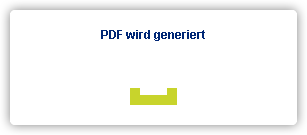German limited tax liability for royalty payments abroad sec. 49 para 1 no 2 lit f and no 6 ITA (Extraterritorial Tax - ETT / Offshore receipt in respect of IP - ORIP)
Since approx. 100 years the German income tax law stipulates in sec. 49 para 1 no 2 lit f and no 6 ITA that license fees could become subject to withholding tax, when the underlying IP (right) is registered in a German public book (register). As it is not quite obvious from a German point of view to recognize which license agreements abroad do refer to IP registered in Germany (so called German Nexus IP), these transactions were overlooked in the past. This year the topic gained momentum and lots of multinational enterprises did recognize that they do have abroad license agreements in place containing German Nexus IP, such as trademarks and patents.
While tax authorities kept silent for the past 100 years regarding this law, the German MoF now issued a two-pager with initial thoughts about the legislation. In its circular dated 6 November 2020 the MoF clarifies that the law – according to its wording - does not require that the source of license income or IP sales proceeds has to be in Germany. Secondly, they do define for patents that applications and their approvals via the European Patent Office with validations and subsequent registration in Germany lead to German Nexus IP, too. Eventually they confirm that the relevant time period reaches back to 2013 and finally they refer to IP transfers (of an unlimited time period/sale of IP) which are subject to capital gains tax and must therefore, be reflected in tax returns. The latter however, applies if there is no treaty protection for the transferor of IP. This is different to royalties that are subject to withholding tax; in this case the tax must be withheld regardless of treaty protection and claimed back unless a treaty clearance certificate has been obtained prior to the royalty payment.
The MoF circular finally made the ETT/ORIP topic public and created awareness. License payers and recipients as well as IP seller and recipients have to investigate, if the associated IP was/ still is subject to German Nexus IP. The time period reaches back to 2013 what might make the investigation burdensome. In case that abroad royalty payments were made between related parties involving German Nexus IP, quarterly tax applications for the last 7 years might have to be submitted as soon as possible, as the regular term of submission and payment of the withholding tax (WHT) is 10 days after calendar quarter end. Where an IP sale relates to German Nexus IP, the tax declaration and payment (capital gains tax) becomes due 14 months after the fiscal year in which the sale took place, if no treaty protection is applicable.
The filing of the tax applications for ORIP purposes (WHT) and the tax returns for ETT purposes (capital gains tax) has to be made with a value reflective of the German Nexus IP. No official guidance on how the value has to be determined has been provided so far, but based on experience from other valuation exercises in transfer pricing matters, the following three procedures should be discussed in brief:
Cost plus: The value is determined based on the associated registration and litigation costs the German Nexus IP did cause. The costs are marked up with an arm's length remuneration for the capital employed .
Bottom up: The value is determined on the respective sales the German Nexus IP generates. An arm's length royalty rate is applied to these sales.
Top down: The value is determined based on the actual payments (royalty or sales price) made to remunerate the IP by applying allocation keys to account for the German Nexus inherent in those payments.
Based on our experience it is worth to consider the different fact pattern the German Nexus IP is based on in respect, but not limited to:
- Registration types of trademarks (local German registration and/or European registration);
- Usage of trademarks (product trademarks vs. umbrella trademarks);
- Usage of patents – function-wise (manufacturing and/or distribution);
- Usage of patents - protective nature (defense vs. actual); or
- Industry specific contribution of patents vs. non registered IP like copyrights.
The individual fact pattern has to be considered appropriately to allow for a reasonable and robust approach in order to determine the tax base.
With the circular dated 6 November 2020 and also in conversations with Munich tax office responsible for the fiscal year 2013 WHT ORIP tax applications, we learned that the German tax authorities do expect that royalty payers now do make up for their missed tax applications and returns as soon as they can in order to avoid criminal consequences. Even where WHT would be covered by treaty protection, the taxpayer might want to disclose any WHT relevant facts to be on the safe side.
For further information, please see also the following articles:



